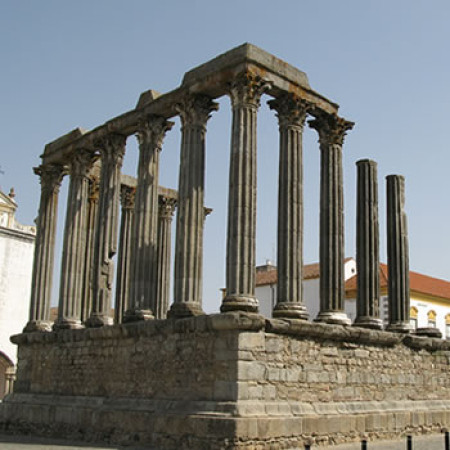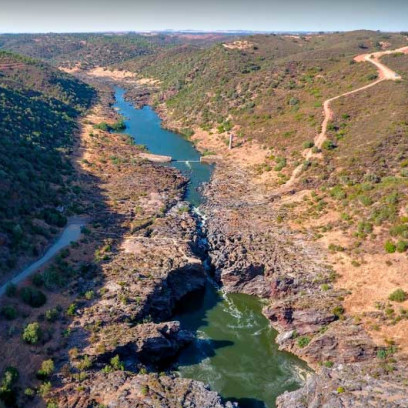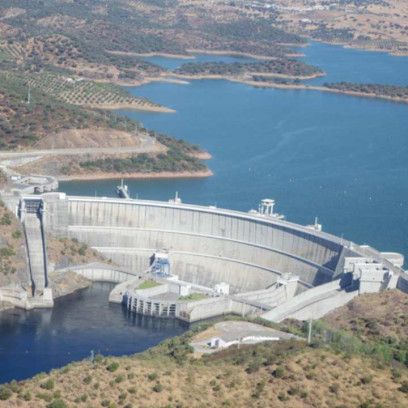Introduction to the ALENTEJO Region of Portugal
The Alentejo region of Portugal ofters a serene escape into vast plains, rolling hills dotted with cork oaks and fortified towns steeped in history. Known for its slow pace of life and traditional agricultural practices, Alentejo invites visitors to unwind amidst its unspoiled landscapes and rich cultural heritage.
From the medieval hilltop villages of Monsaraz and Marvão to the golden plains of the Baixo Alentejo and the rugged coastline of the Costa Vicentina, this region exudes a timeless charm and authentic Portuguese experience.
Featured Historic and Culture Heritage

Temple of Diana in Évora
The Temple of Diana in Évora, Portugal, stands as a magnificent testament to the Roman presence in the region. Believed to have been built in the 1st century AD, this well-preserved Corinthian-style temple is one of the most significant Roman ruins on the Iberian Peninsula. Originally dedicated to the goddess Diana, it later served various purposes over the centuries, including as a castle and even a butcher's market during the Middle Ages. Today, it remains a popular tourist attraction and a UNESCO World Heritage site, captivating visitors with its ancient grandeur and historical significance.

Alentejo Cante
Alentejo Cante is a traditional form of choral singing from the Alentejo region, recognized as a UNESCO Intangible Cultural Heritage. Characterized by its deep, slow, and harmonious melodies, Cante is typically performed without instruments by groups of men or women in two-part harmonies. This singing style reflects the rural life, struggles, and spirit of the Alentejo people, with lyrics often inspired by themes of nature, love, and labor. Cante Alentejano continues to be a powerful expression of Alentejo’s identity, captivating audiences with its raw and soulful resonance.
Geographical Features, Climate, and Natural Landscapes

Rolling Hills and Cork Oaks

Guadiana Natural Park

